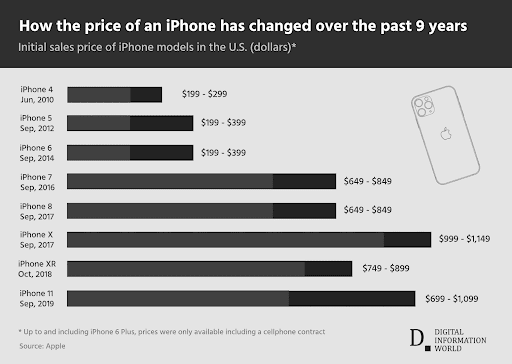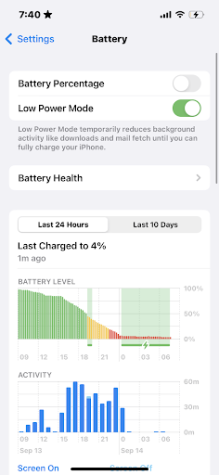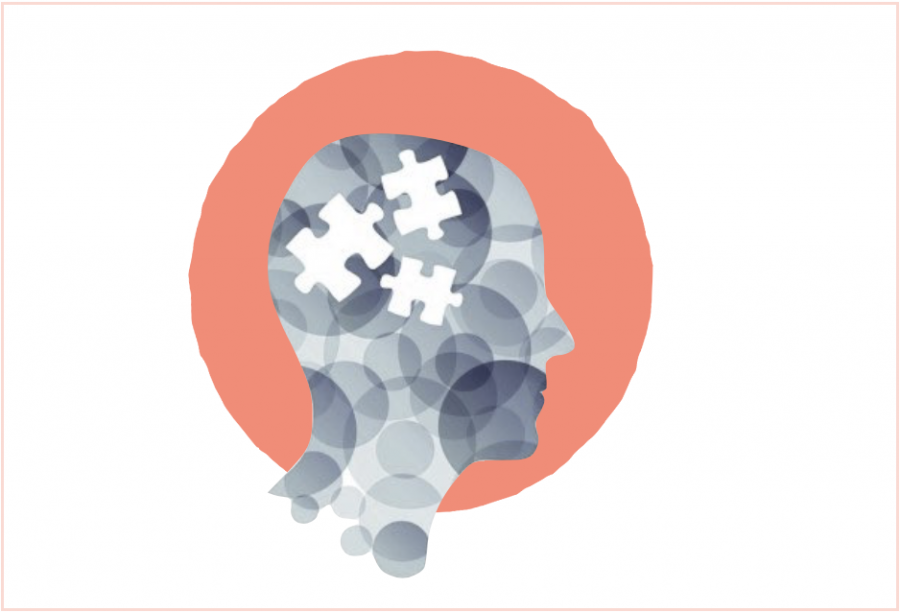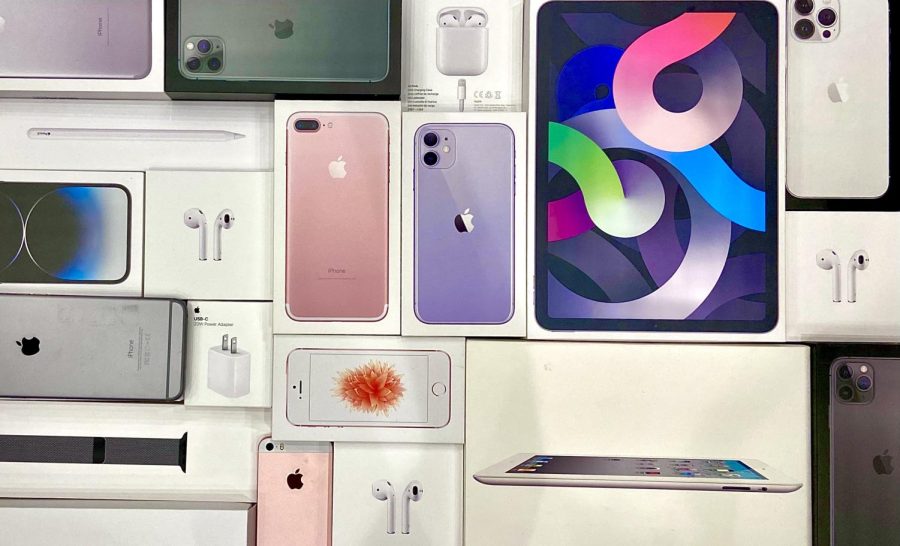Trendy updates lure apple customers into the trap of planned obsolescence
Can you recall a time when an Apple product unexpectedly shut down, froze, or ran out of battery quicker than usual? You may think that these are signs encouraging the purchase of a new one, but in reality, Apple products appear to self-destruct before the average life span of 3-5 years. This is planned obsolescence, and Apple has been implementing it for quite some time.
In 2016-17, Apple released a new software update available for iPhone 6, 7, and SE. This resulted in a significant decrease in quality, and many grew suspicious, saying that this update significantly slowed down the iPhones. In his article, Bobby Allyn from NPR stated that Apple initially denied “purposely slowing down iPhone batteries” with a harmful intention and that it was to “preserve battery life.” However, as widespread reports of iPhones unexpectedly turning off were told, the case went to court.
In a court document, Arizona Attorney General Mark Brnovich said, “Many consumers decided that the only way to get improved performance was to purchase a newer-model iPhone from Apple.” New models are released annually, usually around fall or spring. The latest models are always more advanced than the last, whether that is the quality of the camera, the size of the screen, or the frames per second. As expected, these factors influence cost, so the price rises as well.

Eventually, Apple acknowledged the accusations and agreed to pay “up to $500 million” to settle the “battery gate” case of discreetly slowing down old iPhones. Allyn claims this as the end of unfair treatment towards Apple consumers, but around December 2017, around 150,000 iPhone users in Chile sued Apple as their products began “slowing down after installing software updates.” According to TechXplore, Apple later admitted that the iOS software purposely slowed down the performance of old iPhones and paid $3.4 million to settle the lawsuit.
Mr. Horn, an economics teacher at ISSH, is a loyal user of Apple: he owns an Apple Watch, iPhone, Apple TV, iPad, and even a HomePod. He claims that Apple’s planned obsolescence is a misconception.
Mr. Horn claims that the idea of a company giving a consumer a negative experience on purpose in order to gain profit is ridiculous. “You’re going to sell product products to customers that break down and think [that they are] going to come out, buy more of [the same brand]? No. [People buy the products] because they’re awesome.”
Mr. Horn’s insight regarding the inexistence of planned obsolescence opened a whole new perspective — could planned obsolescence merely be an excuse we made up to comfort ourselves when our phones break, or is Apple victimizing all Apple consumers?
“Planned obsolescence… That means literally telling an engineer, whose passionate about building cool stuff, to make [the tech] break down… This is not how we make products that work.” Mr. Horn insisted that the purpose of tech companies is to make the products “better than the original.” Planned obsolescence “gets worse over time, you can’t do it over the years,” Mr. Horn said.
Mr. Horn explains that the lowered quality of iPhones was because of the lithium-ion battery inside. Over time, the lithium-ion gradually deteriorates, increasing the chances of the iPhone shutting down and breaking. To prevent a sudden breakdown of the iPhone, Apple had to slow them down, conserving battery power. “They didn’t really have a choice.”
“Do you want your phone to shut down immediately or make it function slower to make it hold longer?” Mr. Horn asked. Mr. Horn explained that planned obsolescence might not have been motivated by gaining profit but, instead, to help improve the products so that they can last longer. “It’s obvious to me that they did this so that your phone doesn’t just shut off,” Mr. Horn stated.
Whether Apple was trying to increase revenue, or simply make necessary technological advancements, people nevertheless continue to purchase Apple products, especially the new iPhones. The new iOS 16.2 iPhone update was chart-topping and drew attention even before it was released. Sami Fathi reported that almost 70% of the Apple users with the installation available had downloaded it 100 days after the launch.
However, since its release in September 2022, many users left reviews regarding the bugs and lagging that came with it, causing others to be “reluctant to update.” When discussing this issue with 23 freshmen at ISSH, many mentioned that keeping up with the latest technology (especially iPhones) was “trendy” and “aesthetic,” disregarding the dangers of planned obsolescence.

When Emma C. (‘26) brought attention to her new phone’s strange behaviour, we learnt that despite the excitement she felt getting the “trendy” iOS 16 update, she was disappointed by the charging problems she had to face afterwards.
Emma had just updated her iPhone 13 Pro to iOS 16 the night before. The image below shows that she charged her newly updated phone from 0:00 am to 6:00 am. Based on Apple, iPhone 8 and up can be charged “to 50 percent battery in around 30 minutes.” Six hours should have been a sufficient amount of time for the iPhone to reach 100% charge, but the battery level remained in the red region throughout the night.
As Apple’s products advanced, there were a lot of changes, especially with accessibility. Not only were the charging ports changed, but the earphone plugs as well. The old round plugs are no longer available for newer products such as iPhone 13 and MacBook Pro. Due to these changes, complications arose; those who have an older version laptop with a newer version of the iPhone such as the iPhone 14 not only have to bring two versions of the earphones, one supporting the round plug and another supporting the new port as well as two different charging cables as the ports for charging has changed a lot as Apple advanced.
But do these frustrations really stop Apple consumers from purchasing new items?
All 23 freshmen surveyed claimed to own Apple products. They unanimously agreed that declining battery health and sudden shutdowns were the result of planned obsolescence, but it would not stop them from continuing to buy Apple technology.
A student even pointed out that since almost everyone has the more updated iPhones, it would be strange not to buy one too. She says that “because people have used [iPhones] for so long, every time an upgraded one comes out, it’s [now] part of the culture to buy another one.”
Another student said that even if he were to switch to another company’s phone product like Google, which produced the Android phones series, it would still not be good enough compared to Apple. He can confirm from experience that an Android “was not compatible with anything, didn’t have any good games to download, and had terrible camera quality.”
Despite the ambiguity behind planned obsolescence of iPhones, Apple has made huge advancements in the tech world and is continuing to do so. As every release of a new product leaves a huge impact on both the technological industry and our lifestyles, we all look forward to Apple’s future advancements in AI.
















































